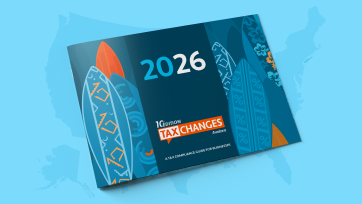
A Harmonized Tariff Schedule review is coming — Are you ready?
Are you ready for the seventh edition of the World Customs Organization (WCO) Harmonized Tariff Schedule? It's here.
The WCO was established in 1952 to facilitate efficiency and consistency for customs administrations and global trade. As of this writing, the organization hosts approximately 200 countries as participating members, which are “responsible for managing more than 98% of world trade.”
The Harmonized Tariff Schedule (HTS or HS) functions as a critical element in the WCO efforts for cohesive commerce. Within the hierarchical system, exported merchandise is categorized and assigned corresponding six-digit codes used in part to apply appropriate duty rates.
Every five years, the WCO reviews and updates HS codes. As technology changes and products become obsolete (like typewriters) or experience a significant increase in production (like 3D printers), the WCO categorizes them accordingly. The organization removes codes that are obsolete due to lack of use and adds new codes for higher-interest items. Alex Baulf, senior director of indirect tax at Avalara, parses some of the changes and explores how the old codes will map into the new in WCO launches new Harmonised Tariff Schedule — HS 2022.
The deadline for countries to complete their updates for the newest edition of the Harmonized Schedule (HS 2022) is January 1, 2022, but if history is any indicator, only about half of the countries that are members of the WCO will be ready. As an international vendor, will you be ready?
Many developing or underdeveloped governments face challenges to meet the deadline due to the size and scope of potential changes. Accuracy can also be an issue: After following the six-digit guidelines, a government may then increase certain codes up to 13 numbers for additional specification, but errors can occur. These factors can create obstacles for those moving goods cross-border. The HS was created to simplify complexities and establish a unified worldwide classification system. But outdated versions of the HS can jeopardize compliance and unnecessarily disrupt an already volatile global supply chain.
If you are an international vendor, it’s vital to evaluate your catalog of classified merchandise and verify that all products are updated correctly — this will help ensure you’re compliant with all the government agencies with which you work.
You can be significantly impacted if you’re not aware of disparities and updates of codes. Product reclassification could require a change in duty rate that can affect costs and budgets, and invalid codes could cause shipping delays, creating headaches and customer frustration.
A good place to start is comparing your product list with the U.S. International Trade Commission Recommended Modifications to the Harmonized Tariff Schedule, 2021. The correlation tables identify current and recommended HS codes. This should give you some insight on potential updates — but it most likely won’t be a comprehensive solution.
Also, stay abreast of compliance pitfalls. A change in HS codes can change compliance parameters, particularly with free trade agreements.
For compliance and customer retention, it’s imperative to optimize your HS codes and make certain your goods are aligned with all new changes.
The WCO also offers a trade tools database for “a single point of access to the Harmonized System, preferential Rules of Origin and Valuation, through a completely new, user-centric and ergonomic interface.”
You may also consider consultations with international tax experts or automated software to help guide you through the mazes.
This article has been updated. It originally published October 7, 2021.

Avalara Tax Changes 2026 is here
The 10th edition of our annual report engagingly breaks down key policies related to sales tax, tariffs, and VAT.
Stay up to date
Sign up for our free newsletter and stay up to date with the latest tax news.














